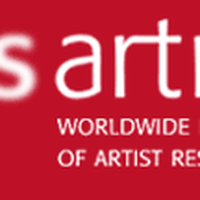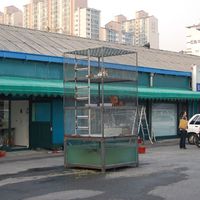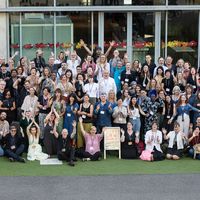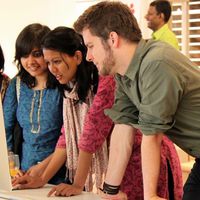China-Denmark: artist residencies, transforming communities

[caption id="attachment_2788" align="alignright" width="170" caption="www.ffkd.dk"]
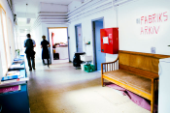 [/caption]
[/caption]An interview with Stine Hebert and Xinxin Guo, Res Artis members
Stine Hebert is Curator and Residency coordinator of the Factory of Art and Design (Fabrikken for Kunst og Design) in Copenhagen, Denmark. Xinxin Guo is curator at the Beijing Studio Center in Beijing, China. Both of them have participated in the last Res Artis meeting. Showing their great interest during my interview with them, they shared their point of view regarding the development and the relationship between artist and public. Here are some extracts of our discussion:
AF: Could you tell me briefly about your art centre?
SH: The Factory of Art and Design is an artist run space located in an old converted industrial laundry. It houses more than 50 studios and work spaces for visual artists, designers, architects etc. Besides providing wood, metal, ceramics and print workshop, we have a 900m2 production hall which functions as well as an exhibition space. We have been conducting two residency programmes which are Cph Air (www.cphair.dk) and the new Nordic program FAIR (www.ffkd.dk). Currently, the Factory is acting as consultants on a new art space being developed in Dar es Saleem, Tanzania.
XG: Founded in 2006, Beijing Studio Center is a non-profit residency programme for visual artists, writers, curators and academics located at Beijing International Art Camp and Huan Tie Art district in China. Beside our aim to introduce Chinese contemporary artists to the world, we give the opportunity to international artists to stay in the heart of Beijing art districts and communicate with local artists and the public. We have 26 studios and 7 are reserved for international artists. Our board, including professional artists, professor, art critic, businessman and governor, selects artists who could get our residency grants.
[caption id="attachment_2794" align="alignnone" width="300" caption="beijingstudiocenter.org"]
 [/caption]
[/caption]AF: I believe that foreign artists who come to your space get an opportunity to share ideas and to engage into a dialogue with local artists during their residency. Could you comment about this experience?
SH: As I’ve mentioned, we have 2 residency programmes: Cph Air and FAIR. Artists in both programmes are invited to do a public talk at the Factory soon after arrival to present their artistic practice and the project which they will be working on during their residency stay. 55 local artists have their studio at the Factory and it is a very unique network that the international artists can access when they are here. As a residency curator & coordinator part of my job is to set up meetings for the residency artists with relevant local curators, researchers and artists. We always take them out to openings and do as much as possible to encourage dialogue with people outside the Factory and the local art world.
XG: Both of them learn new skills and ideas from each other. International artists mostly find some new materials in China, or good craftsman to help them, or have great market feedback from our cooperate gallery.
AF: Artist in residencies often try to be accountable by emphasizing their direct engagement with the community. However, in a position where the artists don’t wish to work directly with the public, how do you explain your position as the organiser to the artists, and how do your negotiations with artists affect the overall outcome of the programme?
SH: We encourage the residency artists to reflect and relate to the local context but we never demand a direct engagement with the community. These negotiations are always very sensitive and we have to take into account each individual and their own needs and desire. We don't have a specific agenda or desired outcome for our residency artists - in order to create a successful stay these issues have to be extremely flexible and redefined from every time a new artist applies to their arrival.
AF: From your experiences supporting the residency programme for many years, what kind of impact does it have on the artists and the local communities as well as arts and culture in general?
SH: My experience is that residency programmes are very valuable but also that every residency stay is as individual as the artists themselves. Sometimes the residency period is not incredibly productive for the artists but an "outcome" or digestion of the experiences abroad surfaces when they are back in their local setting. All is depending on the project the artists create while they are at the Factory and their personality. Their residency is more or less noticed by the local art world.
XG: In China, few artists do installation, new media and public project, local artists and community widen their eyes by seeing art so different from the traditional ones.
AF: At the Res Artis last meeting, the theme raised was "Artist in dialog transforming communities". In which ways do you think that Artist in Residence programme could take its part in transforming communities?
SH: In general, I think it is very important not to be too naive about what a residency program can produce. It involves a short stay in a foreign country and in many ways the knowledge the artist accumulates is superficial - just like a tourist. This can function as inspiration and create curiosity that can later on become very productive for the artist's practise. The major thing is to create the possibility for meaningful encounters with people that the residency artists can maintain a life long dialogue after they have gone back and perhaps explore future collaborations.
XG: I learn a lot from the Res Artis meeting. The BSC will also have public education program next year in which resident artists could teach young kids and adults about art. Through the communication, they build a relationship which I believe could be very warm and inspirable.
AF: How do you envision the Residency programme in the future? What improvement do you think that artists or the residency organisers should seriously take into account?
SH: Residency programmes in the future will probably be more critical in the way they are organised. For instance we currently see the phenomena of residency junkies - of artists jumping from one program onward to the next. The question is whether the purpose of residency programmes is to facilitate living situations for artists that otherwise don't have a home as well as boosting their career by adding exotic residency stays to their CV.
Azizah Fauziah is the former cultural coordinator of the Centre Culturel Francais in Jakarta. She has worked with the Asia Europe Foundation as project officer in the Cultural Exchange Department. She currently lives and works in Marseille, France. Iza_asnawi (at) yahoo.fr
Further readings
http://www.ffkd.dk
http://www.beijingstudiocenter.org
Similar content
posted on
03 Mar 2009
03 Dec 2010
posted on
08 May 2020

